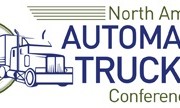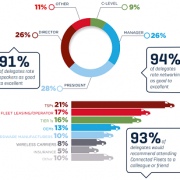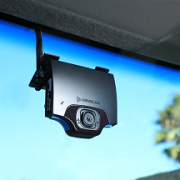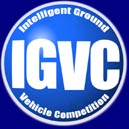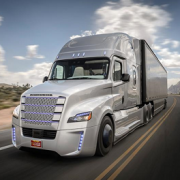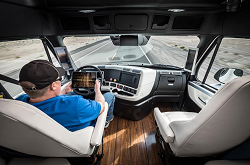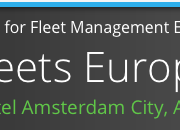Burney Simpson
In the next decade the driver of an autonomous truck will be a system manager who monitors the efficient handling of the vehicle, according to a Daimler North America executive at a panel on driverless technology last week in Washington, D.C.
The panel was convened May 8 by the Brookings Institution and the U.S. Department of State to discuss “Bringing Driverless Cars from Research to International Markets.”
For the most part the panel covered big picture topics like legal liability and data privacy, and the experts called on governments to begin addressing these issues on a global basis.
Adding a touch of the immediate was Jessica Altschul, a Daimler manager of outreach and innovation policy. She noted that Daimler last week launched in Nevada two fully-autonomous 18-wheel Freightliner Inspiration trucks.
By 2025 heavy-duty freight trucks will operate in platoons using adaptive cruise control, and the driver/logistics manager will be monitoring several vehicles, checking for system glitches, reviewing emissions, and closely watching fuel economy, said Altschul.
“The trucks will stay at the same speed and at the same length from each other. Fuel economy will be especially important,” for shipping goods, said Altschul.
SAVING LIVES
Panelist Levi Tillemann welcomed driverless vehicles as a possible godsend that can drastically reduce auto accidents and death.
“My father and grandfather both died in auto accidents, one due to human error, one due to mechanical malfunction,” said Tillemann, a former Energy Department official and author of “The Great Race: The Global Quest for the Car of the Future,” a book on the development of electric vehicles.
“If we can reduce the 30,000 people a year that die in accidents, nearly 90 percent due to human error, that’s a good thing,” said Tillemann. “Let’s not hem and haw over this.”
Driverless vehicles can also bring mobility to the disabled community, said Sonya Smith, associate professor of mechanical engineering at Howard University.
DOUBLE THE FUNDING
The Obama administration is seeking to double the funding for driverless technology research in its 2016 budget for the Department of Transportation, said Jonathan Margolis, the State Department’s acting deputy assistant secretary of state for science, space and health.
Obama is asking Congress for $935 million over the next six years for intelligent transportation systems and automation research, according to the DOT’s pdf FY 2016 Budget Highlights.
Other panelist included Benjamin Wittes, senior fellow at the Brookings Institution, and Karl-Josef Kuhn, head of reliable automation and control with Siemens AG.
Photos courtesy Daimler AG.

